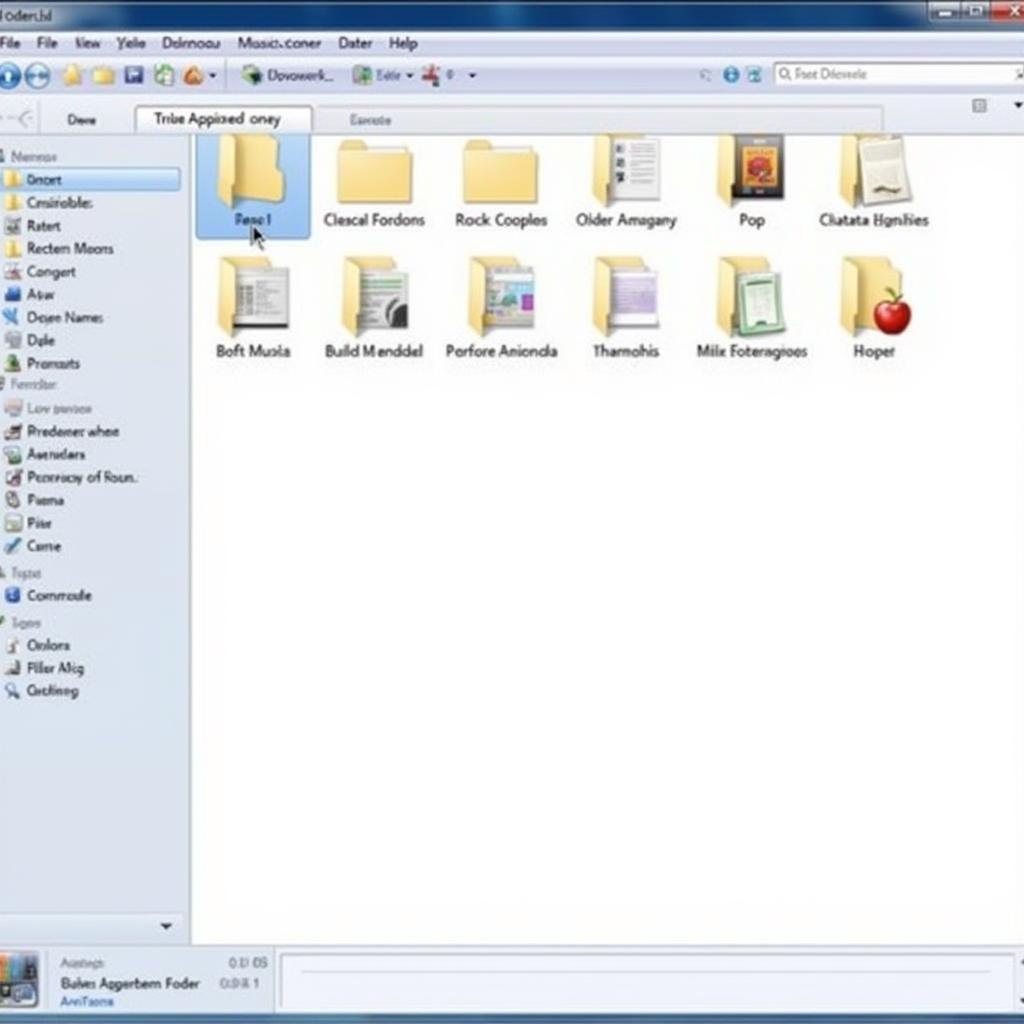Custom Music Folder: Organizing Your Audio Library
November 10, 2024Custom music folders are essential for maintaining a well-organized and easily accessible music collection. Whether you have a modest library or a massive archive of tunes, creating custom folders allows you to categorize and find your music quickly and efficiently. This article will guide you through the benefits of custom music folders and provide practical tips for setting them up on various devices.
Why Use Custom Music Folders?
A well-structured music library is a joy to navigate. No more endlessly scrolling through hundreds of randomly named files trying to find that one specific track. Custom music folders empower you to take control of your audio collection and categorize it based on genre, artist, album, year, or any other criteria that suits your listening habits.
Imagine wanting to listen to some relaxing classical music. With custom folders, you can directly access your “Classical” folder instead of sifting through a jumbled mess of different genres. This level of organization also significantly improves the functionality of music players and other applications, as they can leverage the folder structure for efficient browsing and playlist creation.
Creating Custom Music Folders on Different Devices
Creating custom music folders is relatively straightforward across most devices and operating systems. Here’s a breakdown of how to do it on some popular platforms:
Windows
- Step 1: Open File Explorer and navigate to your music library.
- Step 2: Right-click in the main window and select “New” then “Folder.”
- Step 3: Name the folder according to your chosen category (e.g., “Rock,” “Jazz,” “2023 Releases”).
- Step 4: Drag and drop your music files into the appropriate folders.
macOS
- Step 1: Open Finder and locate your music library.
- Step 2: Right-click in the main window and select “New Folder.”
- Step 3: Name the folder according to your organizational scheme.
- Step 4: Drag and drop your music files into the created folders.
Android and iOS
Custom music folder management on mobile devices generally relies on third-party music player apps. Many apps offer sophisticated file management features that allow you to create, rename, and move folders within the app itself. Consult your music player app’s documentation for specific instructions.
Best Practices for Custom Music Folder Organization
While the specific organization method depends on individual preference, here are some best practices to consider:
- Consistency is Key: Stick to a single organizational structure. Don’t mix and match different categorization methods.
- Use Meaningful Names: Choose folder names that are clear, concise, and easy to understand.
- Start Broad, Get Specific: Create high-level genre folders and then subfolders for artists, albums, or years within those genres.
- Regular Maintenance: Periodically review and reorganize your music folders as your collection grows.
 Organizing Music by Genre and Artist
Organizing Music by Genre and Artist
Advanced Tips for Custom Music Folders
For those looking to take their music organization to the next level, consider these advanced techniques:
- Utilize Metadata Tagging: Ensure your music files have accurate metadata tags (artist, album, year, genre) for seamless compatibility with music players.
- Consider Folder Structure for Playlists: Design your folder structure to facilitate easy playlist creation within your music player.
“A well-organized music library is a testament to a true music lover,” says renowned music archivist, Amelia Harmon. “It allows for efficient discovery and enjoyment of your cherished collection.”
Conclusion
Custom music folders are an indispensable tool for anyone with a digital music collection. By implementing these tips, you can transform your chaotic music library into a well-organized and easily navigable resource. Start organizing your music today and rediscover the joy of listening to your favorite tunes.
FAQ
- Can I create custom music folders on any device? Generally, yes, though the methods may vary.
- What are some common ways to organize music folders? By genre, artist, album, or year.
- Why are metadata tags important? They help music players correctly identify and organize your music.
- How often should I reorganize my music folders? As needed, or as your collection grows.
- Are there any apps that can help with music organization? Yes, many music player apps offer robust file management features.
- What’s the best way to name custom music folders? Use clear, concise names that reflect the folder’s content.
- Can I use a combination of organizational methods? It’s best to stick to one consistent method for clarity.
Common Scenarios
- Scenario 1: You want to create a playlist for your workout. With organized folders, you can quickly access your “Workout” folder and select the desired tracks.
- Scenario 2: You’re looking for a specific album by a particular artist. Navigate to the artist’s folder within the appropriate genre folder to locate the album easily.
Other Helpful Resources
- Check out our article on “Optimizing Your Music Library for Streaming.”
- Learn more about metadata tagging in our guide to “Music File Management.”
Need assistance? Contact us 24/7 at Phone Number: 0915117113, Email: [email protected] Or visit us at: Group 3, Binh An Hamlet, Phu Thuong Commune, Vietnam, Binh Phuoc 830000, Vietnam.